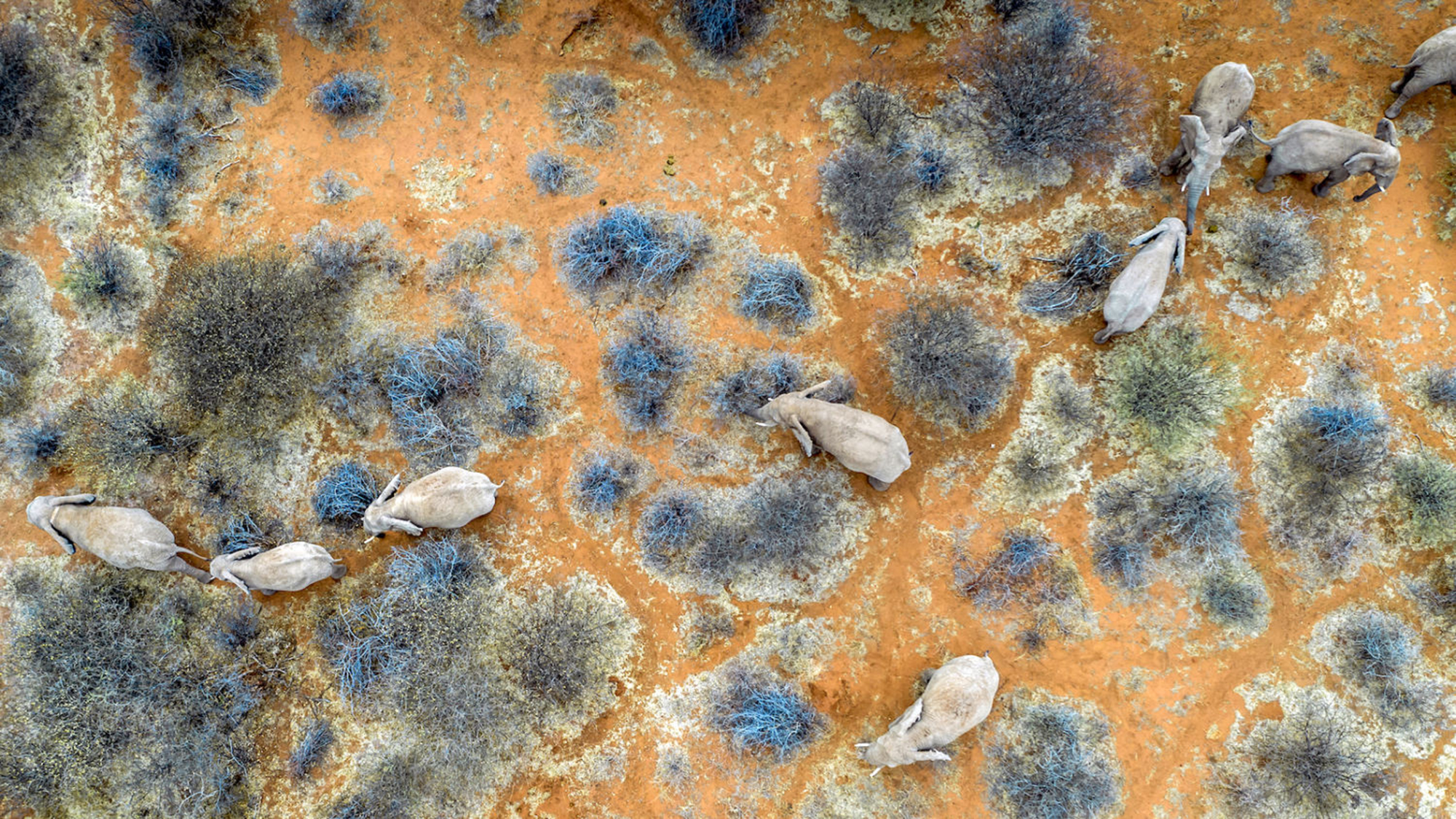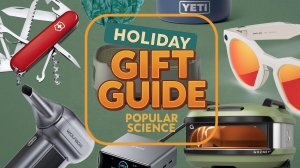

This story originally appeared on Yale Environment 360.
Field biologists tend to be a patient lot, often resigned to long days and weeks in the field and committed to experiments that take years to yield results. But even among that dogged crowd, Martin Wikelski stands out.
Back in 2001, sitting on a porch one evening in Panama, the German ornithologist had the germ of an idea for an “internet of animals,” a global system of sensor-wearing wildlife that would reveal the planet’s elusive, nonhuman worlds. He figured he could get it up and running by 2005. Nearly 20 years later, Wikelski may have finally succeeded — after surmounting roadblocks that range from bureaucratic mishaps to technical glitches to a geopolitical crisis. His space-based system, known as ICARUS (International Cooperation for Animal Research Using Space), is now scheduled to launch, in its latest, satellite-based incarnation, on a private rocket sometime in 2025.
The underlying idea of the internet of animals is to tune into the planet’s hidden phenomena — the flight paths followed by sharp-shinned hawks, the precise fates befalling Arctic terns that die young, the exact landscape requirements of critically endangered saiga antelope — by attaching tiny, solar-powered tracking devices, some weighing less than a paperclip, to all kinds of organisms and even some inanimate objects (glaciers, ocean plastic debris). The inexpensive, globe-spanning system of animal tagging is meant to help scientists understand the precise drivers of global change, and much more, by tracking thousands of tagged animals from space and tying their experiences to the broader impacts facing whole populations or even species.
Wikelski, the director of the Department of Migration at the Max Planck Institute of Animal Behavior, in Germany, said the prospect of having that data, and of “making people aware of the incredible beauty and richness of what’s happening out there,” has made the effort worthwhile, even urgent. It’s also true, as he wrote in his recent book The Internet of Animals: Discovering the Collective Intelligence of Life on Earth, that he “had no clue how many pitfalls there would be… how many times when we desperately wanted to give up, because the whole process had become so exquisitely frustrating that we just couldn’t stand it anymore.”
In 2018, after years of working with designers, engineers, and government officials from multiple countries and continents, Wikelski’s team saw its ICARUS receiver launch aboard a Soyuz rocket from Kazakhstan to the International Space Station, where Russian cosmonauts attached it to their side of the orbiting lab. “We danced, cried, and hugged one another,” Wikelski wrote of the launch. “All the stress of nearly 20 years fell away.”
The internet of animals went live in March 2020, but before the year was out, mechanical issues on the Russian ISS module took the system down. Nearly a year passed before it was up and running again. By the spring of 2021, the system was finally humming along, receiving data from roughly 3,500 tagged animals around the world. But then, in the winter of 2022, Russia invaded Ukraine, and the West cut ties with Russia. ICARUS’s transmission of data abruptly halted.

After the ISS failure, Wikelski’s team set out to redesign the system to use satellite-based receivers, which had always been its long-term aim. In 2022, plans seemed almost set for an ICARUS receiver to orbit on the next GRACE (Gravity Recovery and Climate Experiment) satellite, a joint venture between NASA and the German space agency, scheduled to launch in 2028. But last-minute political haggling siphoned more than a third of the project’s German funding, leaving no money to include ICARUS. “We were totally devastated,” Wikelski recalled. He gave his project three months to find a solution or finally give up. “That’s when we scaled down and said, we need a CubeSat.”
And so beginning sometime next year, the project plans to launch ICARUS receivers on five relatively low-cost CubeSats — miniature satellites roughly the size of a Rubik’s cube and weighing only a couple of pounds — using private launch companies. Funded by the Max Planck Society, the system will cost roughly $1.57 million to launch and have annual operating expenses of around $160,000.
“The geopolitical aspect of this is pretty huge,” said Michael Wunder, a quantitative ecologist at the University of Colorado Denver who used the ISS tags to study the migration patterns of mountain plovers before the war in Ukraine cut off the research. Instead of involving government space agencies, the project’s new iteration keeps the scientists in control.
The new system allows for greater global coverage — the ISS receiver couldn’t communicate with tags at the planet’s highest latitudes — and Wikelski’s team has used the intervening years to shrink the tags by several grams and design new ways for animals to “wear” them, vastly expanding the number of species scientists can study. The team is currently upgrading 4,000 older tags to work with the new system. The tags provide hourly accounts of the animal’s energy expenditure; measure environmental factors like air pressure, altitude, temperature, and humidity; and even use AI to help interpret the animal’s behavior.
The trove of data “will open a lot of doors for researchers,” said Ashley Lohr, who coordinates North American projects for ICARUS through the North Carolina Museum of Natural Sciences. “How stressed was the animal? What were the environmental conditions when the animal was at this place at this time?”
Wunder’s lab group tagged 17 mountain plovers in Colorado in 2021. Native to the plains of the north-central United Staes, the species has declined by 80 percent in the past six decades. But the birds are hard to study because of their habitat and behavior. “They’re singing and vociferous but not in your face,” Wunder said, and in breeding season they like their space, living in densities of only about three birds per square kilometer. The plovers often occupy private ranchlands, which makes them hard to find without trespassing. And they breed in late March and April, while bird surveys, timed to count migratory songbirds, happen in May.

Wunder has long sought to understand whether mountain plovers follow distinct, structured migration patterns or whether birds from different areas mix together in winter flocks. He also wants to learn what drives the birds to migrate. “Are they moving away from something or toward something else?” he asks. He also hopes to determine exactly where the birds are running into trouble.
Before the ISS receiver went dark in 2022, the ICARUS tags revealed that the plovers didn’t follow fixed migration routes and that birds from around the country were mingling in the winter. When several transmitting birds died, Wunder was able to dispatch researchers to their locations and discover the cause of death — predation. The birds started returning to Colorado in February, and Wunder was eager to see which ones would come back — but then the war in Ukraine began. “We were cut off, there was no more information,” he said.
Ellen Aikens, a biologist at the University of Wyoming who did her postdoctoral research on animal migration at the Max Planck Institute, believes that ICARUS could serve as a “democratizing force” in ecology and biology. It’s a way to level the playing field, she says, so that “folks that have a smaller budget or are working on species that are a bit more obscure and there’s not as much funding behind can start to get the same kind of information, baseline info, about where those [animals] are going.”
In her lab, Aikens is studying golden eagles using a tag made by the German company e-obs. “It’s the gold standard of biologging in bird research, if you can afford it and your bird is big enough to carry the transformer” — like geese, storks, and eagles. A single e-obs tag costs more than $1,500 and works over a cellular network, meaning researchers must also pay the cost of data transmission for as long as the animal lives. “If you want to get a good sample size that will allow you to publish your research, that adds up really quickly,” Aikens said. “ICARUS tags are cheaper by an order of magnitude.”
Aikens believes that ICARUS will help transform the way scientists study animals. Our nonhuman neighbors “can take a pulse of the planet and be detectors of change and help us understand the health of the environment,” she said. “As [animals] move these vast distances, they can collect detailed environmental information that can better inform climate models and collect information in places that are difficult to monitor,” whether high in the sky, deep in the ocean, or under a thick layer of ice.
ICARUS tags are solar-powered, whereas some existing tagging systems run on batteries, which can die — ending the research on that individual or requiring recapture to change them out. Other tagging systems rely on animals passing by a signal tower. It works for certain animals, like birds and bats, but not for others. “Because ICARUS is satellite-powered, you don’t have to wait for your animal to go back on the grid and pass by a tower,” said Lohr. Instead, each time a satellite passes over an area, data from nearby tagged animals will be uploaded to Movebank, an open-access database.
A year of animal movements as tracked by ICARUS and other research groups around the world. Data compiled by Movebank.
Ultimately, researchers hope that ICARUS data can “help us pinpoint effective conservation strategies,” Aikens said. “It can help us identify pinch points on the landscape.” While this is already happening for some species, including North American ungulates like elk and pronghorn antelope, whose migrations researchers have tracked for years, for most of the planet’s species “we lack this data and this wide coverage of information, which makes these fine-scale interventions a lot harder to achieve. That’s a place that ICARUS can help fill in a lot of gaps.”
And if the internet of animals can zero in on specific issues — for instance, a bird species dying out because a particular insect it eats is being killed by a particular chemical being sprayed in an area — Wikelski believes such information could drive people to act. “People are willing to do something about it if they know that what they do is really helpful,” he said.
For now, Wikelski continues to practice patience. When I spoke to him in early July, he was dealing with the latest hurdle: satellite launch delays, including one caused by a payload issue and another caused by an ill-timed summer holiday that delayed authorization of the $30,000 payment needed to secure a launch reservation. “Our project is now too small to really be on everybody’s horizon,” he said. “Before, it was too large.”
Nevertheless, Wikelski was hopeful. His team was studying and perfecting the lowest-stress methods of tagging animals and even testing automatic tagging systems, like one for deer involving a salt lick and a tiny elastic band. He remained confident of ICARUS’s potential.
“One really important aspect we think is transformative in biology is the scaling up of tagging,” he said. “So you don’t have one animal but 50 or 100, or you do it across a continent.” Over the next two years he plans to tag 9,000 animals in Europe, including blackbirds, storm thrushes, swifts, and sparrows in a study already underway. Roughly 7,000 of those 9,000 would die in the first year, he said, based on general patterns. “That means we are finally understanding where they disappear. Where are the death traps? These tags are so smart, they can tell us if a female is nesting and if the clutch disappears. So we can not only get information on where the adults are living and dying, but have the adults been successful in hatching or clutching? Is there a massive problem in a certain area? Then we can link individuals to populations and understand the drivers of change.”
